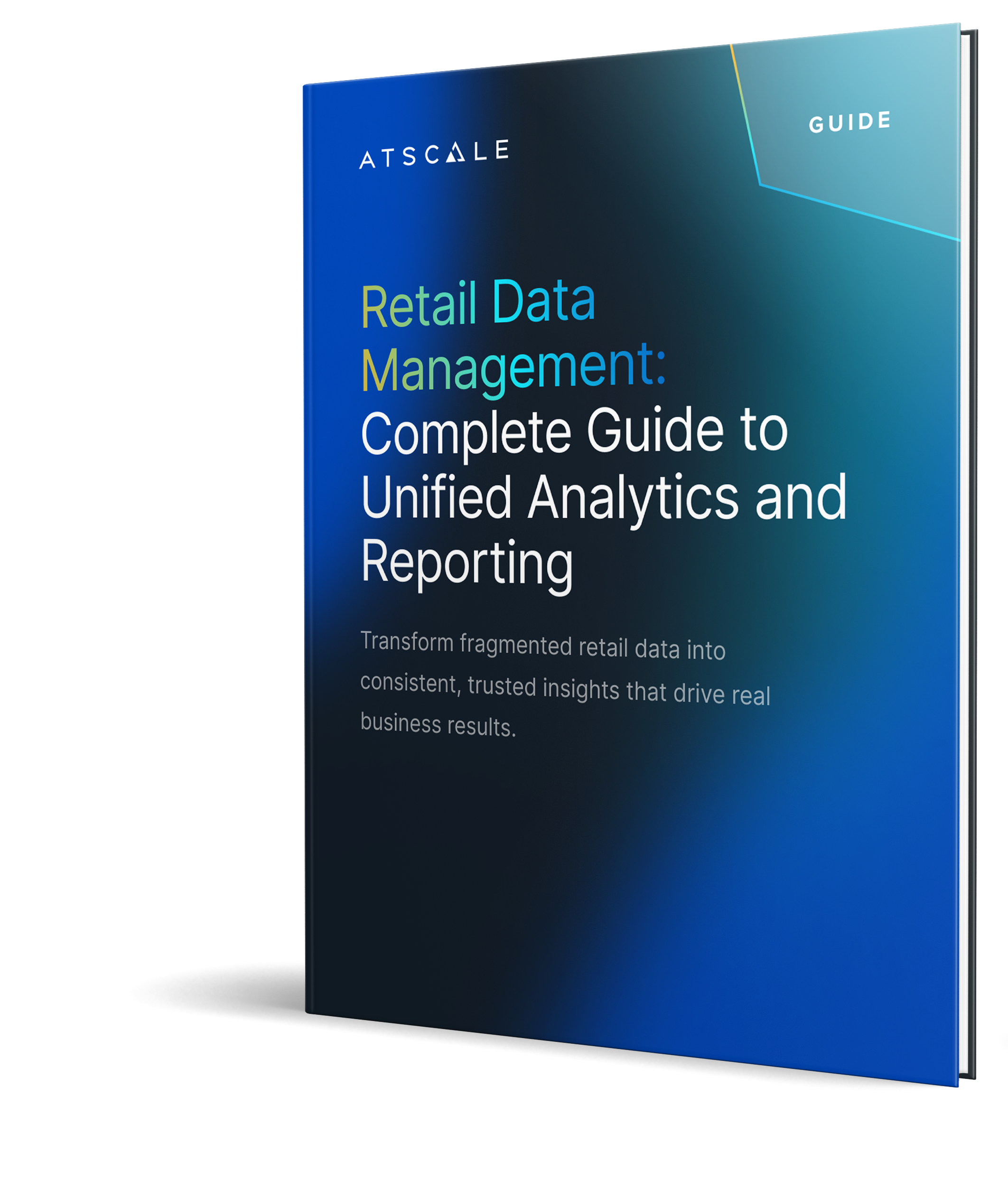The Modern Retail Data Challenge
Today’s retail industry is more data-driven than ever—yet most retailers still struggle to turn data into trusted insights.
With omnichannel customer journeys, global supply chains, 4-4-5 retail calendars, multi-currency transactions, and AI-powered personalization, the volume and complexity of retail data is exploding.
The result?
- Conflicting KPIs between departments
- Delays in decision-making due to manual reconciliation
- AI models producing inconsistent or untrustworthy outputs
- Teams spending more time debating numbers than driving growth
This guide explores how a semantic layer for retail analytics eliminates these challenges—creating a single source of truth for every report, dashboard, and AI application.
Why Read This Guide
By the end of this resource, you’ll understand:
- What a semantic layer is and how it applies to retail analytics
- The real cost of fragmented retail data on operations and profitability
- Retail-specific use cases that semantic layers solve—inventory, customer 360, margin, currency, and calendar
- How to measure success in unified analytics and reporting
- The future of AI in retail data management and how to prepare
What Is a Semantic Layer in Retail Analytics?
A semantic layer is a data abstraction layer that sits between your raw data sources and your business intelligence (BI) or AI tools.
It ensures that metrics like “gross margin,” “inventory turnover,” and “customer lifetime value” are defined once and used consistently—whether you’re querying data in Excel, Tableau, Power BI, or a large language model.
In retail, a semantic layer enables:
- Universal metric definitions across finance, merchandising, and e-commerce
- Centralized governance without disrupting existing tools
- AI-ready data with explainable, business-context-rich outputs
Retail-Specific Challenges Semantic Layers Solve
- Complex Product Hierarchies
Manage seasonal, regional, and brand → category → SKU relationships without breaking dashboards. - Promotional Calendar Complexity
Support 4-4-5, 4-5-4, and week-53 retail calendars with accurate period comparisons. - Omnichannel Analytics
Unify customer journeys across online, in-store, and mobile channels. - Multi-Currency Operations
Deliver dynamic currency conversion at query time without pre-calculated data bloat. - Real-Time Decision Making
Enable sub-second queries on billions of rows for time-sensitive retail operations.
Game-Changing Retail Use Cases
- Inventory Intelligence: Real-time visibility across ERP, POS, and demand forecasting systems
- Customer 360: True cross-channel attribution and lifetime value tracking
- Margin Management: One definition of gross margin—trusted across all teams
- Multi-Currency Reporting: Query-time conversion with full audit trail
- Retail Calendar Mastery: Seamless handling of seasonal shifts and week 53 scenarios
Why AtScale for Retail Analytics
AtScale’s Universal Semantic Layer is purpose-built for retail complexity. We deliver:
- Universal compatibility – Keep Excel, Tableau, Power BI, Python, and more
- Enterprise-grade performance – Sub-second queries at retail data scale
- Retail-specific intelligence – Built-in calendar, hierarchy, and attribution handling
- AI readiness – Governed semantic context for LLMs and AI agents via Model Context Protocol (MCP)
Who Should Read This Guide
- Retail executives driving digital transformation
- Data and analytics leaders seeking metric governance
- Merchandising and finance teams frustrated by KPI conflicts
- AI/ML teams needing consistent training data


